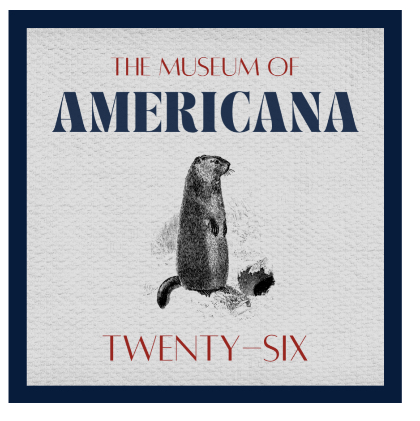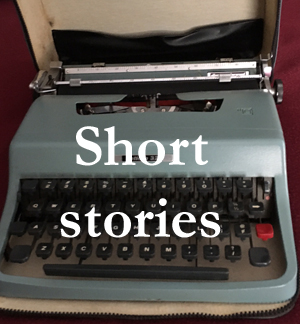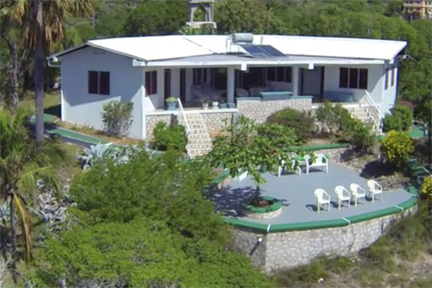Published by the Museum of Americana, February 2022
I was fifteen when I bought my first car, a well-used Model A Ford exactly my age. Over the next eight years, the car and I crossed the country twice, visiting all then-48 states, traveling more miles than I can now remember. Seventy-five years later, I’ve sold my last car, to my grandson. I now depend on others for transportation, but that’s not hard. As Duke Ellington sang when I was learning to drive, I don’t get around much anymore.
I learned to drive a car the way my grandfather learned to drive a horse, by taking the reins under a father’s watchful eye.  That didn’t entirely prepare me for the Model A: our family car was an Oldsmobile Hydramatic, the first mass-produced with an automatic transmission. “No clutching, no shifting.” My two-door Model A coupe had both. It was the first to use what soon became standard controls: a clutch whose floor pedal was next to the brake and accelerator, and a stick gearshift. I later tried out a then-vintage Model T with its planetary transmission and manual throttle. The experience made me more appreciative of Henry’s second child. For eighteen years, the Model T had been the world’s dominant vehicle: Ford sold 15 million. The Model A was in production only four years—mine was built in 1931, near the end of the run—but it would go on to sell almost 5 million, a popularity half again that of the T. I grew up in the Great Depression, became a teen during World War Two, and entered high school as the United States began an era of prosperity few had dreamed of, and, automobiles were becoming ordinary, cherished ornaments of American lives.
That didn’t entirely prepare me for the Model A: our family car was an Oldsmobile Hydramatic, the first mass-produced with an automatic transmission. “No clutching, no shifting.” My two-door Model A coupe had both. It was the first to use what soon became standard controls: a clutch whose floor pedal was next to the brake and accelerator, and a stick gearshift. I later tried out a then-vintage Model T with its planetary transmission and manual throttle. The experience made me more appreciative of Henry’s second child. For eighteen years, the Model T had been the world’s dominant vehicle: Ford sold 15 million. The Model A was in production only four years—mine was built in 1931, near the end of the run—but it would go on to sell almost 5 million, a popularity half again that of the T. I grew up in the Great Depression, became a teen during World War Two, and entered high school as the United States began an era of prosperity few had dreamed of, and, automobiles were becoming ordinary, cherished ornaments of American lives.
In New Jersey, I couldn’t drive my flivver—slang in those days for a cheap car that had seen better days—until I was sixteen. I had of course been too young when I learned to drive the Olds. Any father who could afford a car, though, found ways to introduce his son to what was becoming the test of early manhood. Though I was competent behind the wheel of the Oldsmobile when I bought the Ford, I still had to learn to shift.
We lived then in West Orange, in a three-story home on a pitched lot, the garage in back at cellar level. One drove down and sawtooth-turned on a small gravel apron to enter the garage. Houses with pampered lawns hadn’t yet become the American ideal; behind our apron was a weed patch. With Dad’s help, I leveled that extra area into my own practice-driving oval and used it daily after school with the fervor of a new convert.
By November of 1947, when I could finally drive legally, I had mastered the Model A, including advancing the spark (on the steering column, where turn signals now live) when starting a cold engine. I sanded down the rust, applied two coats of bright blue paint, and emblazoned the driver’s door with Jake, for Jaquith, my high-school steady.
The day after I earned my driver’s license, I foreswore school buses, and Jake—who lived within walking distance of school—abandoned her pedestrian life. Parking at school was no problem: only a handful of kids had cars, and none were brilliantly blue sixteen-year-old conversation pieces. Jake and I been an item; now we were the item.
After graduation, I drove to California, to enroll at Deep Springs College, located on a cattle ranch whose desert valley looked up to the crest of the High Sierra. Students with cars were scarce there, too. My Ford, with its big wheels, heavy flywheel, and four-cylinder engine, could lug like a tractor, so was a better fit for off-road exploration than newer vehicles. Students with geology projects and the like became eager friends. Three years later, I would drive the Model A back east to Cornell on a zigzag north-south-north route designed to hit all (then) 48 states. I would begin junior year in Ithaca, accepted into a new program called American Studies. Yet that summer proved to be my first—and arguably best—course. I would earn my way with occasional stops for work at farms or canneries, aided by a backup reserve of payments from my weekly column in the Newark Sunday News, reporting the accounts of my travels. And when Jake and I parted company, I’d re-christened the car The Strugglebuggy and added a rooftop luggage rack emblazoned 48 States or Bust, making the car and my columns more colorful. I’d also painted an outline map of the United States on the turtleback trunk lid. With a bottle of blue touchup paint (a very new hardware store item), I filled in each state as I entered it, an incomparable conversation piece.
~
From California, I set out northward, aiming for a few days’ work that would earn a $100 grubstake to fuel me and the car through another few weeks and states. In an Oregon town, I found the street corner where men seeking day work stood in the pre-dawn stillness; farmers looked us over and directed the chosen to the back of their pickups. I was an oddball among middle-aged men, but a pear farmer took a chance, and let me follow his pickup in the Model A.
Bees had pollinated too many of the man’s huge pear orchard’s blossoms; some tiny fruit had to be thumbed off. He showed me how (the men were all veterans), watching that I wouldn’t overdo, then left us to our work. He let me sleep in the barn, and after three days I was on my way again.
My next stop, to pick cherries in Utah, was less successful. My fellow workers were bracero Mexicans; we climbed into trees, baskets slung around necks, to pick the cherries as instructed, by the stems. The basketfuls we took to be weighed were examined carefully. If there were more than a few stemless cherries, we earned half as much per pound. My co-workers, though faster, were never so penalized; they never pulled cherries off their stems. I too often did, so I rarely had a full-rate basket. After two days, well short of my target $100, I moved on.
Minnesota offered a pea cannery, many of whose workers were local teenagers; we monitored machines and conveyor belts. And a bonus—I could bunk in a barracks with the Jamaicans who got up each morning in the dark, breakfasted on leathery fried eggs kept overnight in a steam table, and were out early enough to have wagonloads of peapods waiting when canning began.
In late afternoon, the Jamaicans played loud cricket. An older man gave me lessons in patois and this strange form of baseball, and I made new friends. Then, Sunday, my factory pals invited me to a lakeside picnic. I remember their envy. We were ten miles from Iowa, my next stop. “Wow!” several said. “You’re going to Iowa?” I was learning about the insularity of most American lives: none had ever crossed that border.
In Nebraska, I found a one-man job unloading a railroad car of hundred-pound flour sacks, a backbreaking day. In Illinois, I was hired at a tomato-and-ketchup cannery to stoke the very hot coal-fired boilers, while my supervisor smoked his pipe in a breezy doorway.
After Nebraska, my luck failed. A Gulf Coast dock strike had rippled through the Southern economy; no one was hiring. I soldiered on, offering myself for all manner of jobs, trying not to be discouraged, and hoping Florida would be different.
It wasn’t. In St. Augustine, I spent an hour trying to memorize a city map before applying for a taxi job. They saw through me. An out-of-town dairy advertised a milking job—for which I really was qualified—but it was already filled.
By then, I had to tap my reserve from the Sunday News, sent each week to my parents in Ohio. At a payphone outside a suburban restaurant, I put in a collect call. Dad wasn’t home yet, so Mom declined the call; the operator let me hear her suggest that I try again in an hour.
I went back to the car and sat on the bumper to make a sandwich—and dropped a huge, almost-new jar of grape jelly! It broke neatly into a blob that looked salvageable, My effort to spoon jelly off the street was interrupted by a chorus of giggles from three young women homebound from some office job. When I looked up, their smiles turned to sympathy and they came over to chat. They listened as I explained my travels, illustrated by the map on the trunk lid, with well more than half the states filled in. After a pleasant few minutes they moved on, and I sat again on the bumper to see about the sandwich.
I’d hardly gotten started when I heard heels on the sidewalk, and one of the three appeared. “Put that away,” she commanded. “We’re taking you to dinner.”
No coaxing needed. I washed in the restaurant men’s room and joined them for a glass of wine and my best dinner since leaving California. They’d hardly been out of St. Augustine, so were fascinated by, and envious of, my travels.
An hour and a half later we parted company, and I went back to the payphone. Dad was home, and we had a long conversation. Earlier, I might not have disguised that I was lonely and depressed as well as broke. After that dinner, I was back on top, confident I could make all 48 states and not bust.
Dad did whatever one did back in the early 1950s to send my $80 of newspaper earnings via Western Union. That night in St. Augustine, I slung my hammock in a corner of some park for a good night’s sleep, and the next morning, found the telegraph office, and started north.
I spent a few nights with a classmate in Birmingham—he’d seemed bright enough in college, but couldn’t fathom the civil rights revolution then being foreshadowed. The rumblings had not been hard to detect in my jobless wanderings through other Southern states, and Martin Luther King was a budding presence.
Leaving my Alabama colleague to his unfeigned ignorance, I zigzagged along the Eastern Seaboard and through Appalachia, found one more job, made Maine number forty-eight, and doubled back to Ithaca in time to start classes, after the best summer I can recall in my long life. I had embraced and at least partially assimilated an entire variegated continent. Few of my vintage at Cornell, nor most of my more seasoned professors, were so steeped in the reality of America.
~
The Model A was indestructible; I courted my wife-to-be in it. We married at the start of my senior year; she’d just completed her master’s degree and found work in Ithaca schools. She drove the car to work, and it was distinctive enough that students often took delight in telling her where we’d been seen over the weekends.
After my graduation, we sold the Ford—now 23 years old—to my younger brother, and flew off to two years organizing volunteer work camps in Japan, and then a year knapsacking homeward through Asia and Europe, replicating my earlier exploration of my own country.
Toward the end of that peregrination, we bought a Volkswagen Beetle at the Wolfsburg, West German factory, and later shipped it home. It was our family car for the next decade, a modern counterpart of our trusty Model A. When I won a year’s fellowship to study in Cambodia and Romania, we flew off with our two children. Trains, buses, and pedicabs were our transportation in Asia, but in Europe, we bought a Volvo station wagon—another four-cylinder reminder of the past. It became our family car for another decade-plus.
In 2006, I bought a Toyota Camry hybrid. It’s now in California, our grandson’s car as as he settles in to his first full-time job. When I drove the Model A to the Golden State it was eighteen years old, a mechanical relic, an artifact of the era when automobiles became nonpareil ornaments of American adolescence. The Camry isn’t yet a relic—it is, after all, a hybrid—but it will soon seem antiquated beside all-electric cars.
That’s a minor difference: My grandson fulfills a family tradition of taking ancient vehicles across the country to see America first. Good luck, I tell him; may it match mine.





